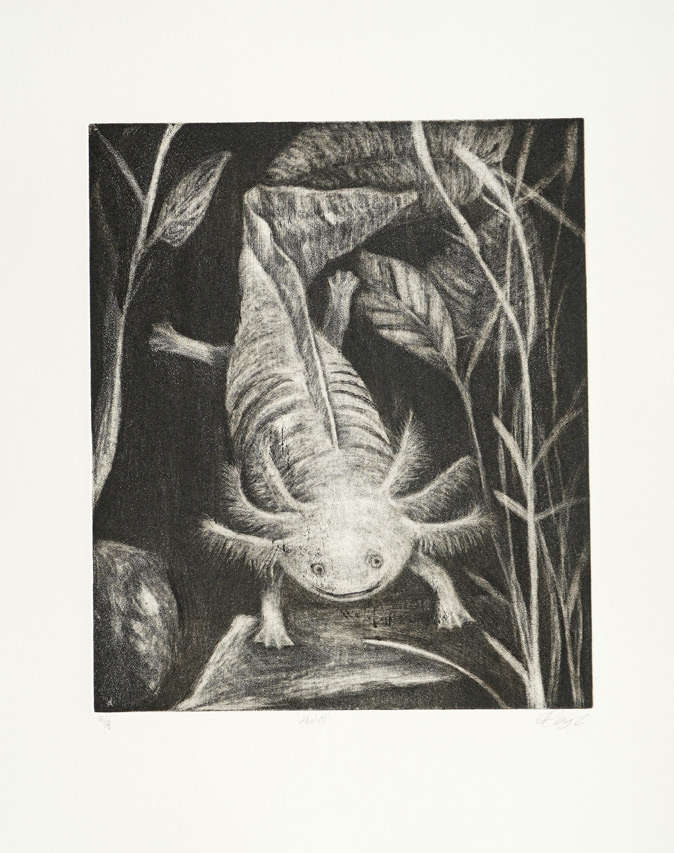Axolotl

I first came across the axolotl at Tynemouth Aquarium.
I was fascinated by the fact they reach adulthood without growing out of their juvenile state. They can also re-grow most of their body parts, including parts of the brain.
The axolotl (Ambystoma mexicanum) is related to the tiger salamander. It is paedomorphic, meaning it retains its juvenile features (such as it’s feathery gills) as an adult. Salamanders are born from eggs and start life under water. They then go through metamorphosis into an adult salamander which mostly lives on land. The axolotl however, lives its whole life under water and whilst it develops lungs, can breathe through its skin and external feathery gills.
In the wild they are critically endangered. The are known to be found in a few locations in lakes and canals around Mexico City, particularly Lake Xochimilco. There are thought to be 50-1000 left in the wild.
The axolotl’s natural habitat has been affected by urbanisation, pollution and new fish species such as carp and tilapia being introduced.
Whilst axolotls live and breed well in captivity, there are conservation projects in Mexico to save the species and restore and regenerate its natural habitat.





